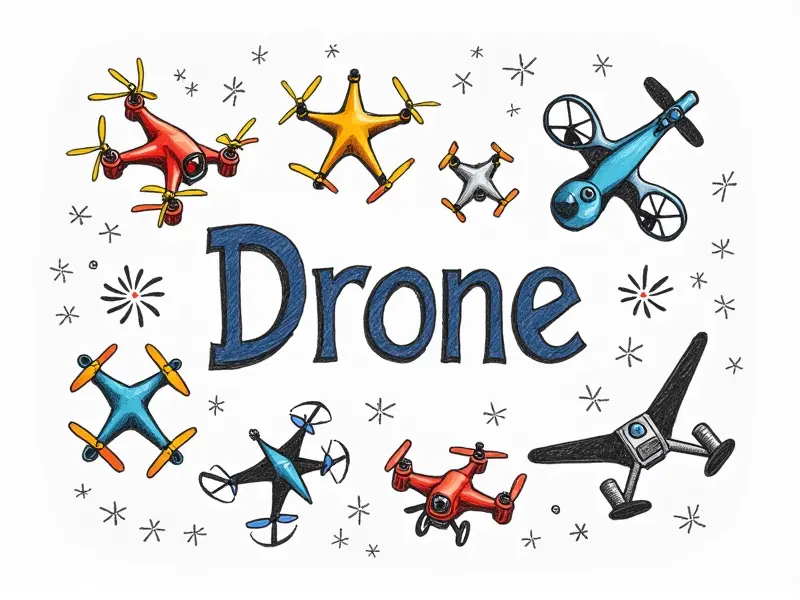Flight stability?

Mastering Quadcopter Stability in Windy Conditions
Quadcopters are popular among hobbyists and professionals alike due to their versatility and maneuverability. However, maintaining stability during windy conditions can be challenging.
- Balancing Propellers: Ensure that all propellers are perfectly balanced for optimal performance in turbulent air.
- Tuning PID Settings: Adjust the Proportional-Integral-Derivative (PID) settings to enhance stability. This involves tweaking parameters like P, I, and D to achieve smooth flight control.
- Using Wind Guards: Install wind guards or cages around your quadcopter to protect it from sudden gusts of wind.
Top Tips for Stable FPV Racing Drones
Flying FPV (First-Person View) racing drones requires precision and stability. Here are some essential tips:
- Lightweight Frame Design: Opt for a lightweight frame to reduce the impact of wind resistance.
- High-Quality Brushless Motors: Invest in high-quality brushless motors that provide consistent power and efficiency.
- Advanced Flight Controllers: Use advanced flight controllers with built-in stability features like automatic level-hold or altitude hold modes.
Enhancing Helicopter Flight Stability Techniques
Helicopters can be tricky to stabilize, especially in dynamic environments. Here are some techniques to improve stability:
- Cyclic and Collective Control: Master the art of cyclic pitch control for forward/backward movement and collective pitch for vertical lift.
- Rotor Balancing: Regularly balance rotors to ensure even weight distribution, which is crucial for smooth flight.
- Gyroscopes Integration: Integrate gyroscopes into your helicopter's control system to enhance stability and responsiveness.
Airplane Stability Adjustments for Smooth Flights
Airplanes require careful adjustments to maintain stability during various flight conditions. Consider the following tips:
- Trimming Elevators: Properly trim your elevator to ensure that the plane maintains a steady altitude.
- Balancing Wing Load: Balance the load on the wings by adjusting weight distribution, ensuring even lift across all sections of the wing.
- Tailplane Adjustments: Fine-tune your tailplane settings to counteract any unwanted pitch or yaw movements.
Essential Gear for Optimal Drone Stability
The right equipment is crucial for achieving and maintaining stability in RC aircraft. Here are some must-have items:
- Gyroscopes: Gyroscopes help stabilize your drone by detecting and counteracting unwanted movements.
- Vibration Dampeners: Vibration dampeners reduce mechanical vibrations, leading to smoother flight performance.
- Battery Management Systems (BMS): A BMS ensures that batteries are charged evenly and safely, contributing to overall stability.
Understanding Gyroscopes and RC Aircraft Balance
Gyroscopes play a vital role in maintaining balance and stability for RC aircraft. They work by measuring rotational movement around an axis:
- Sensing Rotational Movement: Gyroscopes sense the rate of rotation to provide real-time feedback.
- Stabilizing Control Systems: By integrating gyroscope data, flight controllers can adjust settings dynamically to maintain stability.
Common Mistakes Affecting RC Plane Stability
Avoid these common pitfalls to ensure your RC plane remains stable and controllable:
- Inadequate Propeller Balance: Unbalanced propellers can cause vibrations, leading to instability.
- Misaligned Servos: Improperly aligned servos can result in erratic control responses during flight.
- Lack of Proper Calibration: Failing to calibrate your aircraft's systems before each flight can lead to poor performance and instability.
Advanced Tricks to Boost Drone Stability
Beyond basic techniques, here are some advanced methods to enhance stability in RC drones:
- Dual-Gimbal Systems: Implement dual-gimbals for both camera and flight controller to reduce vibrations.
- Active Vibration Control (AVC): Use AVC technology to actively counteract vibrations, ensuring smoother flights.
- Servo Feedback Loops: Integrate servo feedback loops into your control system for more precise and responsive adjustments.
Quick Fixes for Shaky FPV Racing Drone Flights
If you're experiencing shaky flights with your FPV racing drone, try these quick fixes:
- Battery Check: Ensure that batteries are fully charged and in good condition.
- Propeller Inspection: Inspect propellers for any signs of damage or wear.
- Flight Controller Reset: Perform a reset on your flight controller to clear any cached settings causing instability.
Secrets to Maintaining RC Plane Stability
Maintaining stability in RC planes involves regular maintenance and careful tuning. Here are some secrets:
- Regular Servo Maintenance: Clean and lubricate servos regularly to ensure smooth operation.
- Tuning Flight Controller Settings: Fine-tune your flight controller settings based on real-time performance data for optimal stability.
- Weight Distribution Optimization: Optimize weight distribution by carefully placing additional weights or adjusting payload locations.
Achieving Perfect Stability in RC Drones
To achieve perfect stability in your RC drones, focus on a combination of hardware upgrades and software optimizations. Regularly monitor performance data to make informed adjustments:
- Invest in High-Quality Components: Start with high-quality motors, propellers, and other critical components.
- Implement Advanced Control Systems: Utilize advanced flight control systems that offer features like auto-leveling and altitude hold.
- Prioritize Regular Maintenance: Consistent maintenance ensures that all parts are in optimal condition for stable flights.
In conclusion, achieving stability in RC aircraft involves a blend of technical knowledge, regular maintenance, and smart adjustments. By following the tips outlined above, you can enhance your flying experience and achieve smoother, more controlled flights regardless of weather conditions or flight type.

